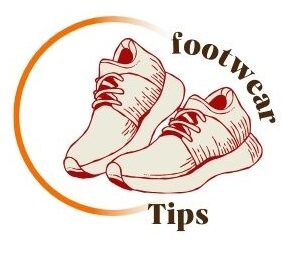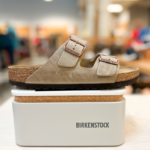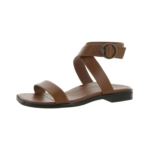Address:
- 2365 Hood Avenue, San Diego, CA, 92123
It’s time to buy new shoes for your child when their current shoes are too small or worn out. Children’s feet grow rapidly, so regular checks for proper fit are essential.
Buying shoes that are too small can cause discomfort and foot problems, while worn-out shoes may not provide adequate support. Properly fitting shoes are crucial for healthy foot development in children. As a parent, it’s important to prioritize your child’s foot health by regularly assessing their shoe size and condition.
By being proactive in replacing their shoes when needed, you can ensure your child’s comfort and well-being as they continue to grow and explore the world around them.

Credit: www.vogue.com
As parents, we all want our children to feel comfortable and supported in their shoes. However, it can be challenging to know when it’s time to replace them. Here are some signs to look out for:
One of the most obvious signs that it’s time to buy your child new shoes is when the soles are worn out. You can easily check this by looking at the bottom of the shoe. If you notice that the soles are thin or have holes, it’s time for a new pair.
Another sign to look out for is if your child’s toes are cramped or there’s not enough space for them to wiggle around. This can cause discomfort and even lead to blisters or other foot problems. If you notice that your child’s toes are pressing against the front of the shoe, it’s time to size up.
It’s important to remember that children’s feet grow quickly, so it’s recommended to check their shoe size every few months. When buying new shoes, make sure to have your child try them on and walk around in them to ensure they fit properly and are comfortable.
By keeping an eye out for these signs, you can ensure that your child is wearing shoes that fit well and provide the necessary support for their growing feet.

Credit: www.shoetrainpotomac.com
Growth spurts can happen at any time, and keeping up with your child’s changing foot size is crucial to ensure their comfort and support. Understanding the frequency of growth spurts and how to measure foot size accurately can help you determine when it’s time to buy new shoes for your child.
Children typically experience growth spurts at various stages of development. These rapid periods of growth can lead to an increase in shoe size, often leaving their current shoes feeling tight and uncomfortable. It’s essential to monitor your child’s feet regularly to identify when a growth spurt may be occurring.
Accurately measuring your child’s foot size is key to ensuring their shoes fit properly. Use a ruler or a Brannock device to measure the length and width of their feet. Remember to measure both feet, as they may be slightly different sizes. Check the fit of their shoes regularly, especially during growth spurts, to avoid discomfort and potential foot problems.
When it comes to buying shoes for your child, it’s important to consider the different types of shoes available to ensure you make the right choice. Factors such as seasonal needs and activity-specific footwear play a crucial role in determining when and what type of shoes to buy for your child.
Seasonal changes can have a significant impact on your child’s footwear requirements. In winter, it’s essential to invest in insulated and waterproof shoes to keep your child’s feet warm and dry. Conversely, in summer, breathable and lightweight shoes are ideal to prevent overheating and discomfort. It’s important to regularly assess the fit of your child’s shoes, as their feet can grow quickly, especially during growth spurts.
When it comes to specific activities, it’s crucial to choose footwear that provides adequate support and protection. For example, for sports activities, specialized athletic shoes designed for the specific sport can help prevent injuries and enhance performance. For outdoor adventures, consider sturdy and durable hiking or trail shoes to provide stability and protection on uneven terrain.
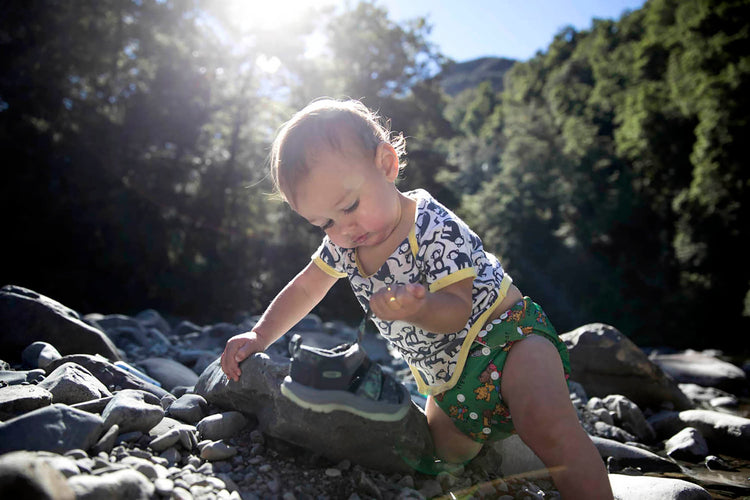
Credit: www.keenfootwear.com
When it comes to buying new shoes for your child, finding the perfect balance between comfort and style can be a challenge. As parents, we want our children to look trendy and fashionable, but we also want to ensure their feet are well-supported and comfortable. In this article, we will explore the importance of proper fit and how you can find shoes that are both trendy and practical for your child.
Proper fit is crucial when it comes to children’s shoes. Their feet are still developing, and ill-fitting shoes can lead to a variety of problems such as blisters, bunions, and even long-term foot deformities. It’s important to remember that children’s feet can grow rapidly, so regularly checking their shoe size is essential. When buying new shoes, make sure there is enough room for their toes to wiggle and that the shoes provide proper arch support. A good fit ensures your child can walk, run, and play comfortably, reducing the risk of foot pain and discomfort.
While comfort should be a top priority, it doesn’t mean you have to sacrifice style. There are plenty of shoe options available that are both trendy and practical for your child. Look for shoes made from breathable materials such as leather or mesh, as they allow proper airflow and help prevent sweaty feet. Additionally, opt for shoes with adjustable closures like Velcro straps or laces, as they provide a secure fit and allow for easy adjustments as your child’s feet grow. Remember, it’s important to involve your child in the decision-making process, allowing them to choose shoes that reflect their personal style while still meeting the necessary comfort requirements.
When it comes to budgeting for kids’ shoes, it’s important to strike a balance between quality, comfort, and cost. As children’s feet are constantly growing, it can be challenging to know when to invest in new shoes and how to do so without breaking the bank. By following some cost-effective shopping tips and knowing when to invest more in higher-quality footwear, you can ensure that your child has the right shoes for every stage of their development.
Explore the second-hand debate on buying children’s shoes. Learn about the pros and cons to decide when to opt for new pairs. Consider the benefits of quality and fit versus cost savings for growing feet.
The discussion around buying second-hand shoes for children revolves around the advantages and disadvantages associated with this practice. Let’s delve into the key points to consider.When it’s time to buy new shoes for your child, avoid waiting too long or too soon. Watch for signs of discomfort, such as blisters or difficulty walking, and regularly check the fit of their shoes. This will help prevent any foot problems and ensure your child’s comfort and safety.
Buying shoes that are too big with the intention of your child growing into them can lead to discomfort and potential foot issues.
Ignoring your child’s complaints about discomfort or pain in their shoes can result in long-term foot problems.
When buying new shoes for your child, remember to prioritize their comfort and foot health above all else.Take your child on a shoe shopping adventure. Let them try different styles and colors.
Create a scavenger hunt to find the perfect pair. Make it a fun and exciting experience.
Show kids how to clean and maintain their shoes. Teach them the importance of proper care.
Explain how clean shoes last longer and look better. Encourage responsibility and good habits.
You should buy new shoes for your child when their current shoes no longer fit well or have visible signs of wear and tear. It’s important to regularly check your child’s shoe size and replace their shoes as needed to ensure proper foot development and comfort.
It’s recommended to replace your child’s shoes every 3-6 months or as soon as their shoes show signs of wear and tear. Children’s feet grow quickly, so it’s important to regularly check their shoe size and replace their shoes to ensure proper foot development and comfort.
When buying shoes for your child, look for shoes that fit well, provide proper support and cushioning, and are made of breathable materials. It’s also important to consider the shoe’s purpose and ensure it’s appropriate for your child’s activity level and foot type.
It is important to keep an eye on your child’s shoe size and condition to ensure their comfort and foot health. Regularly checking for signs of wear and tear, observing any discomfort or complaints, and considering growth spurts will help you determine when it’s time to buy new shoes.
Remember, investing in quality footwear is essential for your child’s overall well-being. Keep their feet happy and supported for their active adventures!
Get our most valuable tips right inside your inbox, once per month!
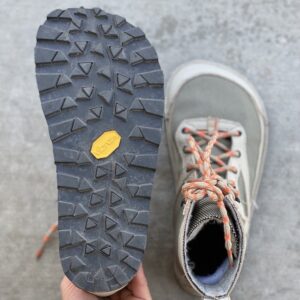
Looking for walking shoes with a wide toe box? Check out these top options for men and women that offer comfort, support, and a roomy

Looking for cheap barefoot shoes? Check out WHITIN Men’s Ultra-ventilated Barefoot Shoes for $19.99 on Amazon.com or Men’s Quick-dry Barefoot Shoes for $8.47 on Temu.
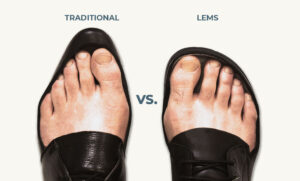
Foot-shaped shoes are available in various brands such as Lems Shoes, Padgene, Barekick, WHITIN, relxfeet, Xero Shoes, New Balance, Earthing Harmony, Atoms, BRONAX, Hike Footwear,
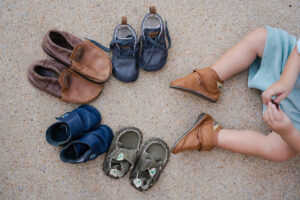
Toddler Barefoot Shoes provide a minimalist and lightweight option for kids to splay their feet naturally while walking, running, or playing sports. These shoes have
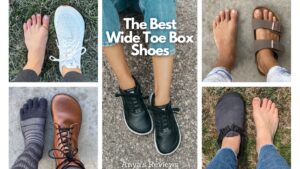
Discover a variety of wide toe box shoes for women in Austin, Texas, including options from Orthofeet, WHITIN, Temu, and more. These shoes offer comfort
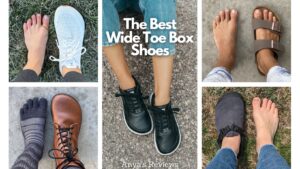
Toe box shoes provide ample space for the toes, allowing them to move freely and comfortably. They are available in various styles and sizes, with
